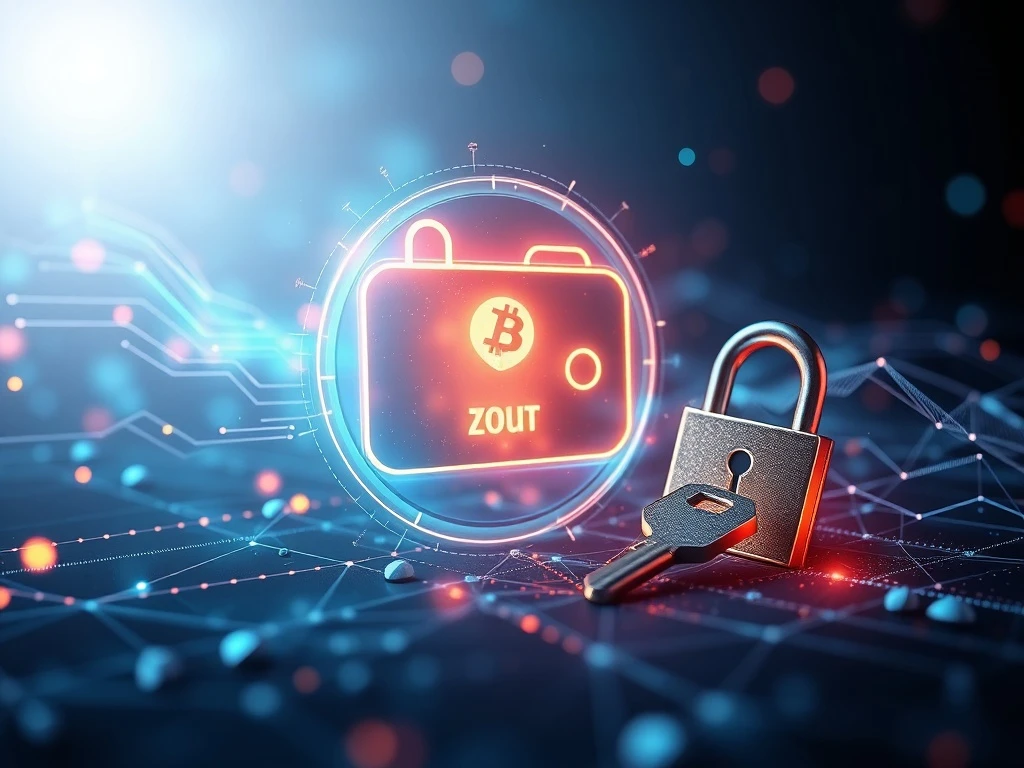Ultimate Crypto Wallet Recovery: Reclaim Your Digital Assets in 2025

Losing access to your digital assets can feel devastating. In the fast-paced world of cryptocurrency, forgetting a password or misplacing a seed phrase is a common, yet critical, challenge. Many individuals find themselves in this exact predicament, searching for reliable crypto password recovery methods. This comprehensive guide explores what genuinely works in 2025, offering clear steps to help you reclaim your valuable crypto.
The problem of lost crypto access is widespread. According to Ledger analysts, between 2.3 million and 3.7 million Bitcoin (BTC) is considered permanently lost as of early 2025. In 2024 alone, the US Federal Bureau of Investigation estimated over $9.3 billion in losses from cryptocurrency investment fraud. A significant portion of these losses affects individuals over 60. Many victims lose their funds directly or fall prey to deceptive recovery scams. If you have lost your seed phrase, forgotten your wallet password, or encountered suspicious activity, do not despair. Legitimate methods exist to help you recover your cryptocurrency account. However, no single solution fits all, and not every “recovery expert” has your best interests at heart. Therefore, understanding your options is crucial in 2025.
Understanding Your Wallet Type for Effective Crypto Password Recovery
Before attempting any crypto password recovery, you must identify your wallet type. This fundamental distinction dictates the available recovery paths. Essentially, two main types of wallets exist within the crypto ecosystem:
- Custodial Wallets: These wallets are found on centralized cryptocurrency exchanges like Binance, Kraken, or Coinbase. With a custodial wallet, the service provider manages your private keys. Therefore, losing your password can often be rectified. These platforms typically allow password resets through email verification or Know Your Customer (KYC) authentication processes.
- Non-Custodial Wallets: Examples include hardware wallets like Ledger and software wallets such as MetaMask or Trust Wallet. These wallets empower you with full control over your private keys. Crucially, the service provider does not hold your password or seed phrase. Consequently, if you lose both your password and your seed phrase for a non-custodial wallet, recovering your cryptocurrency becomes extremely challenging. This is unless you have meticulously backed them up elsewhere. Most users encounter difficulties with non-custodial wallets, particularly after hardware failures or simply forgetting login details. Remember, custodial wallets do not offer a seed phrase since the service provider handles private key management and security.
Step-by-Step Seed Phrase Recovery if Password is Lost
If you have forgotten your password to a non-custodial wallet, such as MetaMask or Exodus, but still possess your seed phrase recovery is often straightforward. This scenario is relatively manageable. Follow these steps to restore access to your wallet:
- Choose ‘Import Wallet’ or ‘Restore Wallet’: When you open your wallet application, you will typically see options like “Create a new wallet” or “Add an existing wallet.” Select the option to add or restore an existing wallet. The application might also prompt you for a “Google Drive backup.” If you saved your seed phrase to Google Drive, select the associated email account. Then, restore the wallet from that backup. Carefully enter your 12- or 24-word seed phrase. Precision is key here; even a single incorrect word will prevent recovery.
- Set a New Password: After your wallet successfully restores using the seed phrase, the application will prompt you to create a new password. This new password will replace your old one for local access. Always choose a strong, unique password for enhanced security.
Regaining Access to Your Lost Crypto Wallet on Exchanges
For those who have lost their password on a centralized crypto exchange, regaining access to your lost crypto wallet is generally simpler. Exchanges act as custodians, holding your assets and managing the recovery process. Follow these steps to restore access:
- Initiate Password Recovery: Navigate to the exchange’s login page. Locate and click the “Forgot password?” link. You will then need to enter your registered email address, phone number, or username associated with the account. Follow the on-screen instructions diligently.
- Verify Your Identity: To confirm your identity, the exchange may ask you to answer security questions. Alternatively, you might need to submit personal documents, such as a government-issued ID. This process adheres to the exchange’s security and Know Your Customer (KYC) policies.
- Create a New Password: Once your identity is successfully verified, you can create a new, secure password. Furthermore, adding two-factor authentication (2FA) to your cryptocurrency wallet is highly recommended. This extra layer of security helps prevent unauthorized access to your account.
Navigating Non-Custodial Wallet Recovery: When Options are Limited
If you have lost your seed phrase for a non-custodial wallet, this scenario presents significant challenges. In most cases, non-custodial wallet recovery without both your password and seed phrase is exceptionally difficult, often impossible. However, if you believe you might have written it down or saved it digitally, consider these avenues:
- Digital Backups: Search your computer files for “.txt” or “.pdf” backups. Try using data recovery tools if you suspect accidental deletion.
- Password Managers: Check any password managers you use. Sometimes, seed phrases are mistakenly saved there.
- Physical and Cloud Storage: Look through old emails, cloud drives (like Google Drive or Dropbox), or photos on your phone. You might have captured an image of a handwritten note containing your seed phrase.
- Safety Deposit Boxes: Consider any secure physical locations where you might have stored important documents.
Remember, keeping your seed phrase offline in multiple secure locations, such as a safety deposit box in a different city or with a trusted individual, significantly increases security. This practice ensures you can recover your cryptocurrency even if one backup is destroyed or lost.
Advanced Strategies for Crypto Recovery Services
Still locked out despite all efforts? Some last-resort options exist, particularly for high-value wallets. These methods are advanced and carry inherent risks.
- Brute-Force Recovery Tools: Specific password recovery tools exist for certain wallet file formats. For instance, Bitcoin Core wallets use “.dat” files. These tools attempt millions of password combinations. If your original password was weak or followed a common pattern, you might succeed. However, extreme caution is advised. Never download tools from unverified forums. Always stick to vetted GitHub projects and meticulously read all documentation.
- Blockchain Forensics and Recovery Experts: If you suspect theft or unauthorized password changes, professional crypto recovery services can offer specialized help. These firms utilize chain-tracing and clustering tools. They may work with exchanges to freeze stolen assets and identify money-laundering patterns. While they cannot recover your seed phrase, they might track and recover crypto stolen by hackers or scammers. This requires swift action and strong evidence.
- Legal Routes: If you are dealing with outright fraud or theft, reporting the incident to authorities is crucial. Agencies like Action Fraud or Interpol Cybercrime handle cryptocurrency theft. Working with ethical hackers under legal frameworks and filing civil cases with blockchain professionals are also viable options.
Identifying Legitimate Crypto Recovery Services and Avoiding Scams
The landscape of crypto recovery services is unfortunately rife with fraudulent actors. These scammers prey on individuals who have already suffered losses. Therefore, identifying legitimate experts is paramount:
- No Up-Front Fees: Genuine firms operate on a contingency basis. This means you only pay if they successfully recover your funds. Be highly suspicious of any service demanding payment before work begins.
- Detailed Process and Transparency: A legitimate firm will initiate with a thorough case review. They will examine your wallet addresses and transaction IDs. They then assess feasibility and provide informed updates, progress reports, and realistic timelines.
- Publicly Verified Reviews: Look for success stories and testimonials across independent platforms. Check for verifiable track records.
- Transparent Contact Information: Be wary of “experts” who communicate solely through anonymous channels like Telegram or generic Gmail accounts. Reputable firms have professional contact details.
- Avoid Guarantees: No service can guarantee a 100% success rate. Not every wallet can be recovered, even with the most advanced tools. Any firm promising guaranteed recovery is likely a scam.
This article does not contain investment advice or recommendations. Every investment and trading move involves risk. Readers should conduct their own research when making any decision.









